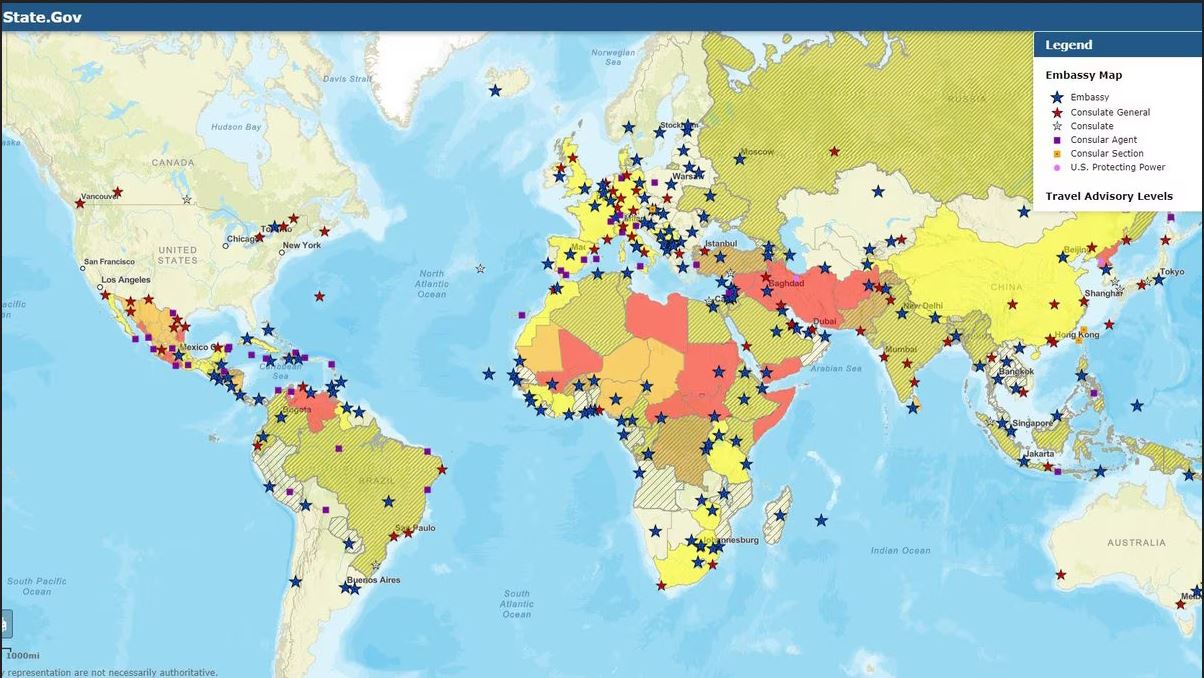Imagine the excitement of strolling along a sun-kissed beach in Mexico, the thrill of exploring ancient ruins in Iran, or the serene beauty of floating in the Dead Sea of Israel. Now, imagine receiving a travel warning for your dream destination. The excitement gives way to anxiety. But, fear not! This article is your flashlight in the dark, guiding you to understand travel warnings, ensuring you navigate your way to a safe and enjoyable travel experience.
What are Travel Warnings?
Picture a red flag flapping in the wind, alerting you to potential danger ahead. That’s essentially what a travel warning is. It’s a message from authorities, like the U.S. Department of State, advising travelers about risks in certain countries. Risks could be civil unrest, frequent terrorist attacks, health crises, or even natural disasters. Travel warnings are the guiding stars in the vast sky of international travel, helping you steer clear of potential dangers.
Why are Travel Warnings Important?
Imagine crossing a busy street blindfolded. Sounds scary, doesn’t it? Ignoring travel warnings is akin to that. These warnings are not just pieces of advice; they’re vital tools for your safety. Our analysis of American deaths abroad shows that ignoring them can lead to dire consequences. Mexico, for instance, a popular tourist destination, sadly tops the list for American deaths abroad. These numbers underscore the importance of heeding travel warnings – they’re lifelines that can save us from unseen dangers.
Case Study: Decoding Travel Warnings
A Closer Look at Travel Warnings
Travel warnings are like signposts on your journey, guiding you through potential hazards and ensuring your adventure remains memorable for the right reasons. Let’s dive deeper into these warnings and the essential elements they encompass: the country, date, link, and description.
The Country and Date
The country and the date are fundamental aspects of a travel warning. The country indicates where the potential risks exist. Our data analysis reveals that some countries like Mexico and Iraq tend to have more frequent warnings. These countries might pose a higher risk to travelers due to varying reasons such as political unrest, crime rates, or health crises.
The date is equally crucial. It gives us a time frame when the warning was issued and helps us understand if the risk is current or in the past. It’s important to note that situations in countries can change rapidly. A place that was considered risky a few months ago may now be safe, and vice versa.
The Link and Description
The link and description are where the meat of the information lies. The link usually leads to a page detailing the warning further. It’s a valuable resource for travelers seeking more information about the warning.
The description, meanwhile, provides an overview of the potential risks in the country. For example, a warning for Mexico might highlight the prevalence of drug-related violence, particularly in certain regions. It may advise travelers to avoid these areas or to exercise increased caution.
On the other hand, a warning for a country like Iraq might cite political instability and a heightened potential for terrorism. It may even recommend deferring non-essential travel.
Making Informed Decisions
By understanding these specific risks, you can make informed decisions about your travel plans. If you’ve always dreamed of exploring the ancient ruins of Iraq but find there’s a recent warning citing political instability, you might choose to postpone your visit. Or, if you’re planning a trip to Mexico, being aware of the areas with high drug-related violence could help you select safer regions to visit.
Remember, these warnings are not meant to scare you but to equip you with the necessary information to make safe travel decisions. They are tools at your disposal, helping you to navigate your journey in a safer and more informed way.
An Informed Traveler is a Safe Traveler
In the end, an informed traveler is a safe traveler. Understanding travel warnings is an essential part of planning your journey. They are your compass in the world of travel, guiding you away from potential dangers and towards safer paths.
So, next time you’re planning your adventure, take a moment to understand the travel warnings. It’s not just about reaching your destination; it’s about enjoying the journey and returning home safely to share your unforgettable experiences.
How to Respond to Travel Warnings
When you see a storm brewing on the horizon, you take shelter, right? The same principle applies to travel warnings. If your chosen destination is facing a serious warning, consider changing your travel plans or taking additional safety measures. Stay informed by subscribing to updates from the U.S. Department of State. You can also check travel advisories from other credible sources. Being forewarned is being forearmed. It’s always better to be safe than sorry.
Travel Warnings and Travel Trends
Ever wondered how travel warnings affect travel trends? Our data suggests a complex relationship. Some countries with frequent warnings remain popular destinations. For instance, despite Mexico’s frequent warnings, it’s still a top destination for American travelers. This shows that while warnings are important, they’re just one factor among many that travelers consider. The allure of sandy beaches, ancient ruins, or exotic food can sometimes overshadow potential risks.
Travel Warnings vs. Travel Alerts
Did you know that travel warnings and travel alerts are different? Travel alerts are for short-term issues that could affect your travel plans, like strikes, disease outbreaks, or even temporary tensions due to elections. Warnings, on the other hand, are more serious. They’re issued when long-term issues exist, like civil war or political instability. Understanding this difference is crucial to making informed travel decisions.
Practical Tips for Traveling Safely Abroad
So, how can you travel safely in the face of warnings? First, be aware of local customs and laws. A little respect goes a long way in a foreign land. Second, always stay connected with the local U.S. embassy. They’re your lifeline in case of emergencies. Finally, keep your loved ones informed about your whereabouts. Safety is not just a word, but a habit.
Conclusion
In the grand adventure that is travel, being informed is the key to staying safe. Understanding and responding to travel warnings are vital steps in planning your journey. So, pack your bags, keep your eyes open, and embark on your journey with safety as your trusted companion.
References
For further reading and staying updated on travel warnings, visit the U.S. Department of State website. Knowledge is power, and in this case, it could be the difference between a trip of a lifetime and a trip you’d rather forget. Safe travels!









